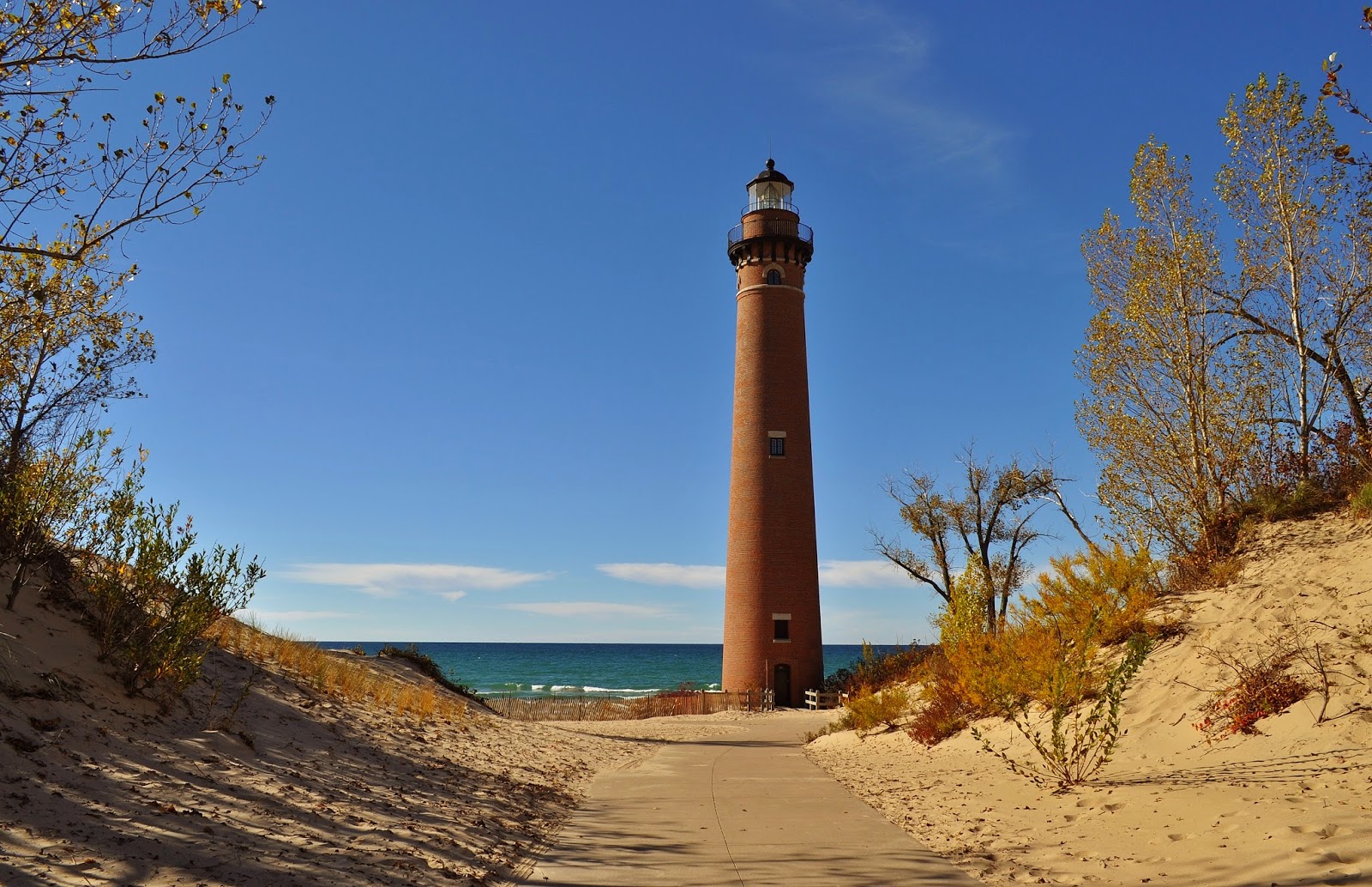
Wednesday, October 29, 2014
LITTLE SABLE POINT LIGHTHOUSE-MICHIGAN
Little Sable Lighthouse in 1914 with white tower.
Photograph courtesy U.S. Coast Guard
In 1871, the Lighthouse Board noted that “a simple inspection of the chart of Lake Michigan” would demonstrate that a third-order, lake-coast light was needed on the third bump, Little Sable Lighthouse. In early records, this point was referred to by its French name Petite Pointe au Sablé, which translated means Little Sand Point. It was known by it's French name until 1910, when the official name was changed to Little Point Light Station. Complying with the Lighthouse Board’s request for funds, Congress appropriated $35,000 for the lighthouse on June 10, 1872. Over forty acres of what was public land was set aside by President Ulysses S. Grant the following month, and a working party arrived at the site the following April. The crew first built a dock for landing material and provisions followed by temporary buildings for their accommodations. By July, more than 100 piles had been driven into the sand and topped off by a timber grillage to serve as a foundation for the tower. A cofferdam was then built in the sand so that the ground water could be pumped out and cement could be poured over the grillage. With the foundation in place, work began on the brick tower, which slowly grew to a height of roughly 100 feet. Atop the tower, a decagonal lantern room was installed to house a third-order Fresnel lens, manufactured by Sautter & Co. of Paris, France. This lens was different than most in that its lower and center section were fixed, while its upper section, made up of ten bull’s-eye panels, revolved once every five minutes to produce a flash every thirty seconds. Brackets supporting the upper section of the lens were connected to a pedestal that revolved atop chariot wheels. Every eleven hours, the keepers had to wind up a ninety-pound weight that was suspended between the tower’s inner and outer walls and powered the revolving mechanism. A covered way connected the base of the tower to a twelve-room, two-and-a-half-story dwelling, built for the light’s two resident keepers. The tower and dwelling were both left their natural redbrick color. James Davenport, (a grandson of a Native American chief, Chief Waubojeeg) who was transferred from his position of assistant keeper at Waugoshance Lighthouse to be the first head keeper at Little Sable Point Lighthouse, activated the light atop the tower upon the opening of navigation in 1874. A circular iron oil house, capable of holding 360 gallons, was built 100 feet northeast of the tower in 1893, and a decade later, a brick oil house, with a metal roof and door, was added. In 1900, the tower was painted white to set it off from the surrounding dunes, and in 1911 dormers were added to the top story of the dwelling, greatly expanding its living space. Little Sable Lighthouse was reportedly the last lighthouse on the Great Lakes using an incandescent oil vapor lamp. Little Sable Lighthouse retained its keeper until 1954, one year after the station was electrified and automated. Henry Vavrina, who had been head keeper of the lighthouse since 1939, transferred to Big Sable Lighthouse, where he served another decade before retiring. No longer needed, the handsome brick dwelling was torn down in 1958, leaving the tower alone on the beach. A land exchange between the U.S. Federal Government and the State of Michigan was approved in 1973. Michigan received the deed to the lighthouse and land in 1974. The Coast Guard had the tower was sandblasted in 1976 to eliminate the need for regular painting. The Sable Points Lighthouses Keepers' Association received a lease from the State of Michigan in 2005.
Subscribe to:
Post Comments (Atom)







No comments:
Post a Comment